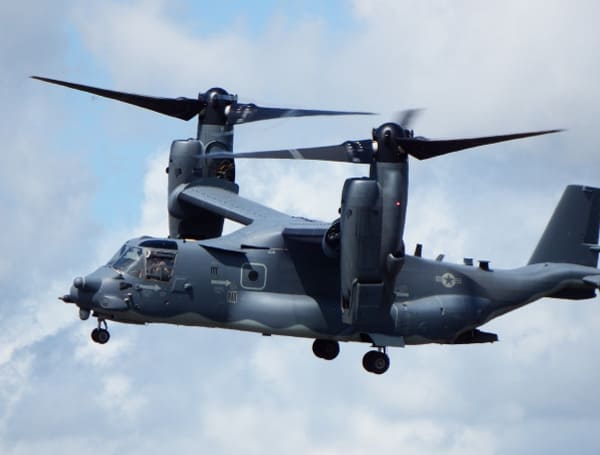The Osprey V-22 helicopter, a unique hybrid aircraft that combines features of a helicopter and an airplane, has experienced a series of fatal accidents, raising concerns about its safety.
In response to a recent crash off the coast of Japan, the military has grounded all Osprey helicopters, pending an investigation into the materiel failure that led to the deaths of eight Air Force Special Operations Command service members.
Lt. Gen. Tony Bauernfeind, head of Air Force Special Operations Command, directed the standdown “to mitigate risk while the investigation continues,” the command said in a statement. “Preliminary investigation information indicates a potential materiel failure caused the mishap, but the underlying cause of the failure is unknown at this time.”
The Grounding of Osprey Helicopters
Following the crash in Japan, the Air Force, Navy, and Marine Corps have taken the unprecedented step of grounding hundreds of Osprey helicopters. Initial findings suggest that a materiel failure, rather than crew error, was responsible for the tragic incident.
In response, Lt. Gen. Tony Bauernfeind, head of Air Force Special Operations Command, directed a standdown to mitigate risk while the investigation continues. Naval Air Systems Command also announced the grounding of all Ospreys, including the Marine Corps and Navy variants of the aircraft.
The duration of the grounding remains uncertain, as it will be determined by the investigation’s findings and subsequent recommendations.
The Osprey’s unique design, which enables it to take off and land like a helicopter while cruising at high speeds like an airplane, has been a contributing factor to multiple incidents. The crash in Japan has shed light on a long-standing mechanical problem with the clutch, which has plagued the program for over a decade.
Questions have also been raised about the manufacturing of Osprey parts in accordance with safety specifications.
Read: Florida Man Threatens To Launch Rockets At Navy Helicopter For Flying Over His House
A Troubled Safety Record
The Osprey, despite being a relatively young aircraft, has a troubled safety record. It became operational in 2007 after undergoing extensive testing. However, more than 50 troops have lost their lives while flight testing or conducting training flights in the Osprey.
Over the past 20 months alone, there have been 20 deaths resulting from four crashes. The fatal accidents have prompted concerns about the aircraft’s safety and the need for improvements in various aspects.
In August, the Marines identified a clutch failure as the cause of a fatal Osprey crash in 2022, although the root cause remained unknown.
The Marine Corps report on the crash emphasized the necessity of improvements to flight control system software, drivetrain component material strength, and robust inspection requirements to prevent future incidents.
Investigation and Ongoing Efforts
The investigation into the crash in Japan is currently underway, with a focus on identifying the cause of the materiel failure.
The military aims to determine the underlying factors and make recommendations for the safe resumption of Osprey operations. The grounding of the aircraft allows for a thorough examination of the fleet and the implementation of necessary modifications to enhance safety.
Efforts to improve the Osprey’s safety record extend beyond the immediate investigations.
The Marines, Air Force, and Navy are committed to addressing the mechanical issues and design flaws that have led to fatal accidents. By collaborating with industry experts, conducting rigorous inspections, and implementing software and component upgrades, they aim to enhance the reliability and safety of the Osprey fleet.
Android Users, Click To Download The Free Press App And Never Miss A Story. Follow Us On Facebook and Twitter. Sign up for our free newsletter.
We can’t do this without your help; visit our GiveSendGo page and donate any dollar amount; every penny helps

